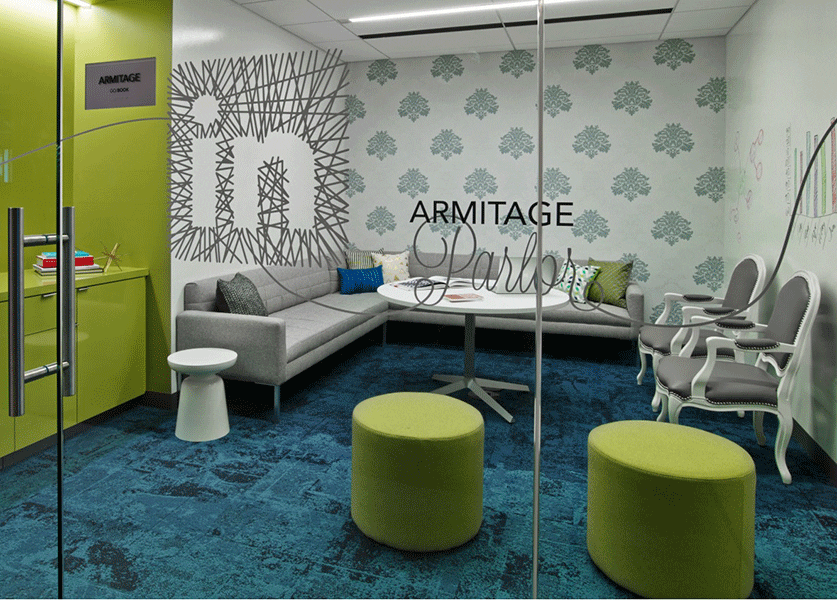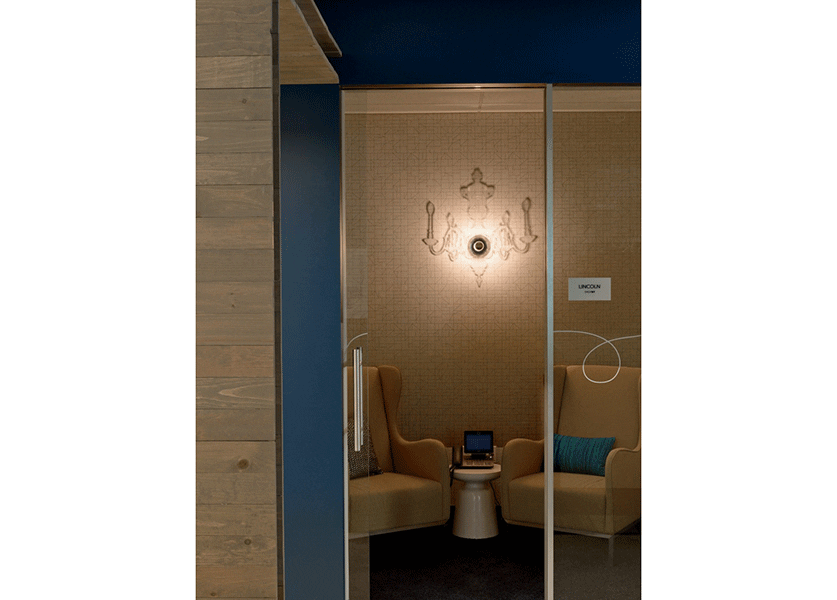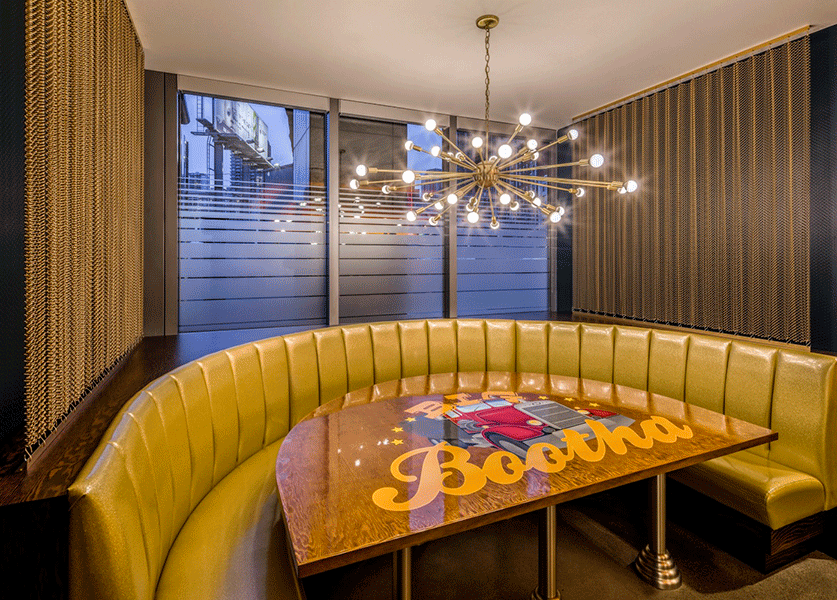More...
By Annelle Stotz, SEGD | Senior Director of Experiential Graphic Design | May 19, 2015
Storytelling that Reinforces Client Business Objectives is Integral to IA's Workplace Design Approach.
Environmental graphic design—also known as experiential graphic design, or simply EGD—is about integrating a story with the built environment to create a memorable experience. Elements like material, image, color, pattern, illustration, and typography are aligned with architectural features to convey a specific message or create a specific experience. The message and experience can vary greatly – from informing users how to interact with the space to inspiring occupants about who inhabit that space and what is done there.
Designing Successful Interiors
Understand who the client is and what the project objectives are. Design is problem solving and EGD, as a design discipline, is no exception. Our clients are coming to us because they need to address organizational evolution, create or maintain a desired culture, and recruit new talent. Real estate is a company’s biggest asset financially; but from a branding perspective it is the primary touch point for interaction and engagement with that company’s brand.
Tell Your Story Strategically
Experiencing the workplace can be compared to something very familiar to each of us: Inviting a guest into our home. When we have a visitor, we welcome them into our home, and as we go further into our home our conversation becomes more intimate, as do the living spaces. The same sequence applies to the workplace. The architecture defines how the space unfolds, and creates a hierarchy of how a person is to interact with that space. EGD reinforces that established hierarchy with a relevant and logical storytelling component.
Engage Your Workforce
Make sure that the space is not only functional, but also relevant, to the users. Understand the differences between the generations of the workplace and what they need to feel engaged and valued. EGD can be used to organize or inform what users are supposed to be doing in a specific space—creating a sense of comfort because there is no ambiguity or confusion. EGD can also celebrate and inspire users about what they do on a daily basis and how that impacts the business on a bigger scale—creating a sense of belonging and feeling valued for their contribution. EGD applications can help the users understand and connect with their work space, making those workplace values more tangible.
As companies expand into different markets, it is important to maintain a consistent identity, not only to their customers but also to their employees. EGD gives companies the opportunity to create a workplace that is recognizable and familiar while honoring local context and culture.
Like What You See?
If you enjoyed this post, then you'll probably enjoy learning more about the EGD practice at IA. Click below to read "The Rise of EGD: Defining the Workplace Experience."
EGD: storytelling through space!






